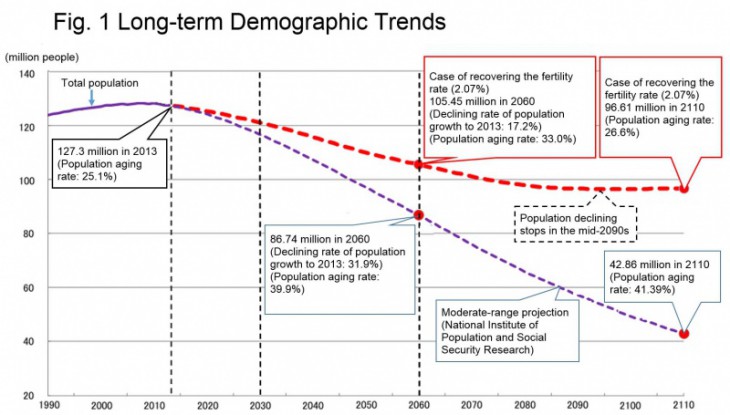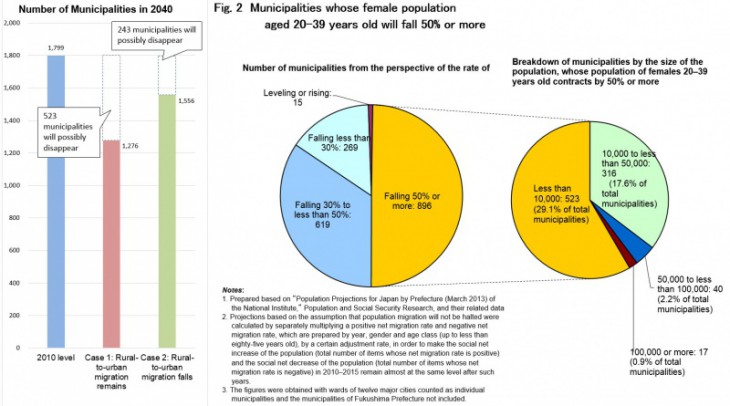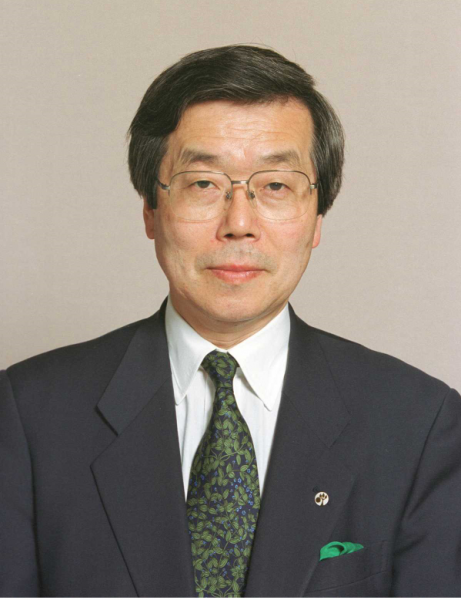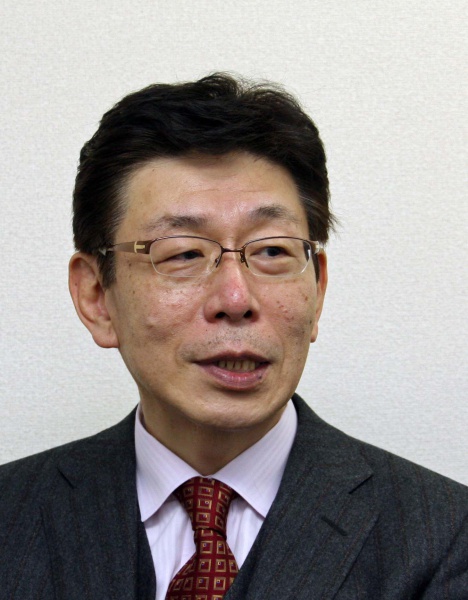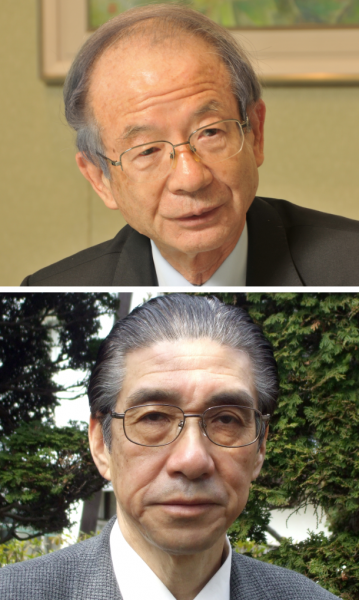Choices for the Future —Overcoming depopulation and a hyper-aged society to build a growth and development model originating from Japan—
In May 2014, the Committee for Japan’s Future, a task force under the Council on Economic and Fiscal Policy, released an interim report on the discussions that have been held thus far. With the permission of the Cabinet Office, Discuss Japan here presents the main arguments and summary conclusions of the detailed discussions.
Introduction
If no action is taken against the current situation, an extremely harsh and difficult future will be awaiting us. Nevertheless, if systems, policies and people’s way of thinking are changed rapidly, the future can be changed.
The Japanese economy is beginning to get out of a long-standing deflation on the back of Abenomics. We must ensure that the recovering economy will turn into a solid one and result in sustained growth and development. To make sure this happens, it is essential that, while closely monitoring structural changes in our economy and society, we envision the difficult future that we might face if no action were taken against the current situation, and seek to clarify the framework of a mid- to long-term policy that will usher Japan into a different future.
To conduct a study from this perspective, the “Committee for Japan’s Future” was created([i]) this January under the Council on Economic and Fiscal Policy. The Committee, while facing the fact that a future characterized by a rapid reduction and hyper-aging in the population([ii]) is approaching, and viewing a half century ahead with a turning point around 2020 in mind, has moved forward the discussions to present mid- to long-term challenges and a direction of measures to overcome the issues.
This report summarizes the basic idea of the Committee based on discussions that have been conducted. We expect that the message of this report will be shared by many people including the different segments of this country, the working generation who can reform the current situation, as well as the next generation who will play leading roles in the future, providing an opportunity to create a new movement toward “Choices for the Future.”
I. Fifty years down the road, the declining population in society will continue to exist
The future offers limitless possibilities. A half-century from now, new science technologies and businesses will bring unpredictable changes to our daily lives. In addition, the world situation, driven by progress in globalization and IT, may be drastically changed. The future is full of uncertainties. There is, however, one certainty. It is the fact that fifty years down the road, the declining population in our society will continue to exist.
If the current birthrate remains unchanged, the total population of Japan will fall to two-thirds of today’s size to approximately 87 million in fifty years, resulting in an unprecedentedly remarkable “hyper-aged society” in which approximately 40% of the population is 65 years old or older. Even if the total fertility rate quickly recovers to a population replacement level([iii]) of 2.07 by 2030 and stays at such a level thereafter, the population will decline to approximately 106 million in fifty years and it would take about eighty years from now to put an end to the decrease in population.
Attention should also be paid to the speed with which the population is declining. The population peaked in 2008 with 128.08 million and has since decreased by an average of 160,000 every year thereafter until 2013. If the current birthrate level continues, the population decline will be further accelerated. By the late 2010s to the beginning of the 2020s there will be a drop in the population by 500,000 to 600,000 on average every year, and by the beginning of the 2040s, a drop of one million on average every year will occur. Going forward, we will face a population decline that will occur with unprecedented speed. This “sharp population decline” will have significant impact on our future, such as a reduction in labor force population, a slowdown in economic growth, shrinkage in local economy, and a crisis in social security and sustainability of the fiscal policy of the Government and local governments.
In addition, if we cannot appropriately respond to globalization, the progress in IT, and other trends in the world, we will face more serious risks.
We should firstly once again realize that the future of a “depopulated and hyper-aged society” is coming around the corner and share a sense of crisis. That being said, instead of thinking pessimistically, we must be forward-looking and move ahead with drastic reforms.
II The Future can be changed
1. An image of the future if no action were taken against the current situation
To share a sense of crisis about thepotential impact of a “depopulated and hyper-aged society,” imagine a future if the economy and society of Japan remained as they are.
(i) Negative growth: Contraction of the size of economy
Japan’s economy has recently seen its potential growth weakening due not only to a decrease in labor population, but also a slow rise in productivity. Going forward, in a situation where the labor population declines even faster if nothing is done about the current situation of a slowing increase in productivity, it will be difficult for Japan’s economy as a whole to continue to achieve positive growth.
If our economy contracts in size, it will be more susceptible to influences from such factors as overseas economies and international financial markets, which will increase the short-term volatility of our economic activities. In addition, amid globalization and the growth of emerging Asian countries, we will see the size of Japan’s economy shrink relatively in terms of international comparisons.
(ii) Demographic Onus([iv]) and Downward Spiral: Contraction in economy leads to the degradation of people’s lives.
If the percentage of the working population decreases, we will face a “demographic onus,” a situation in which the number of people who are supported exceeds that of those who work([v]). This would be a heavy burden to economic growth. If the population drops rapidly, the domestic market will be contracted and become less attractive to invest in, thus making it difficult to create innovations through the gathering and exchange of people. Then, there will be the possibility of falling into a “downward spiral,” where, due to these developments, once a contraction in the size of the economy begins, it does not stop.
If both produce a strong effect, a “demographic onus” and a “downward spiral” would impose a great burden on people that offsets economic growth, threatening to decrease the actual per-capita consumption level, or the metric for the actual quality and level of people’s lives.
(iii) Entrenched and replicated social inequality
Our labor market is bipolarized, comprising regular employees who are subject to a long working hours and contract employees who are subject to uncertain employment and difficulties in pursuing careers. A road to success for young people greatly depends on whether they are employed as regular or contract employees when taking on jobs after graduating from school. Chances are low that they can have a second chance.
The capabilities of women and the elderly are not cultivated satisfactorily and if such a situation persists, long working hours to compensate for shortages in the workforce will become a more serious issue. Then, with no improvement in a work-life balance, birthrates keep declining. If the labor market continues to remain bipolarized, social gaps will be entrenched and replicated, and the number of people who are marginalized from society and have no hopes for the future will rise.
| Japan | France | U.K. | Sweden | Germany | U.S. | |
|---|---|---|---|---|---|---|
| Average age at first marriage for women | 29.2 (2012) |
30.8 (2011) |
― | 33.0 (2011) |
30.2 (2011) |
25.8 (*1) |
| Average age of women giving first birth | 30.3 (2012) |
28.6 (2006) |
30.6 (2010) |
29 (2011) |
29 (2011) |
25.1 (2005) |
| Percentage of children born outside of marriage (2008) | 2.1% | 52.6% | 43.7% | 54.7% | 32.7% | 40.6% |
| Percentage working long hours (over 49 hours a week) (2012) | Total: 22.7% Male: 31.6% Women: 10.6% |
Total: 11.6% Men: 16.1% Women: 6.5% |
Total: 12.0% Men: 17.3% Women: 5.8% |
Total: 7.6% Men: 10.7% Women: 4.2% |
Total: 11.2% Men: 16.4% Women: 5.0% |
Total: 16.4% Men: 21.8% Women: 10.2% |
| Husbands’ housework and nursing time (2006) | 1:00 | 2:30 | 2:46 | 3:21 | 3:00 | 3:13 |
| Government spending for family allowance as a percentage of GDP (2009) *2: child allowance, childcare services, etc. |
0.96% (FY2011: 1.35%) |
3.20% | 3.83% | 3.76% | 2.11% | 0.70% |
Sources:
* Average age at first marriage for women: (i) Japan: Health, Labour and Welfare Ministry “Population Survey Report,” (ii) France, Sweden and Germany: Eurostat
* Average age of women giving first birth: (i) Japan: Health, Labour and Welfare Ministry “Population Survey Report,” (ii) France, Sweden and Germany: Eurostat, (iii) U.S.: Centers for Disease Control and Prevention, National Center for Health Statistics “National Health Statistics Report” (March 22, 2012)
* Percentage of working long hours: ILO database
* Husbands’ housework and nursing time: Eurostat, “How Europeans Spend Their Time—Everyday Life of Women and Men” (2004), Bureau of Labor Statistics of the U.S. “American Time-Use Survey Summary” (2006), Ministry
of Internal Affairs and Communications “Survey on Time Use and Leisure Activities” (2006)
* Government spending for family allowance as a percentage of GDP: OECD “Social Expenditure Database”
*1 Data of U.S.: average of 2006–2010
*2 Data for government spending for family allowance as a percentage of GDP exclude deductibility
(iv) More than a quarter of local governments may disappear([vi]) and inhabitants in Tokyo will be hyper-aged
So far, a decline in the population and the aging of the population have occurred in local areas ahead of others. Going forward, a decline in and the aging of the population will also progress quickly in metropolitan areas, especially in the Tokyo Metropolitan area. The population inflow to the Tokyo Metropolitan area, where the birthrate is even lower than that in local areas, will spur depopulation and hyper-aging. Fifty years from now, more than 25% of local governments, primarily those in rural areas, will find it difficult to perform administrative functions. On the other hand, the Tokyo Metropolitan area, while unable to avoid the effects of hyper-aging, will lose the vitality of a global city and there will be many “medical refugees” and “long-term care refugees,” or people who cannot obtain medical or long-term care services even if they have an adequate income and assets.
(v) Risk of financial collapse and a lower international status
As aging in the population progresses, social security provisions, mainly expenses for medical and long-term care, tend to rise further. If, while the net savings of households and enterprise are declining, the fiscal deficit is not reduced to a satisfactory degree, current surpluses will structurally shrink, and we must look abroad for the purchase of the government bonds. Consequently, there is the possibility that we will have to pay higher interest and become more vulnerable to shocks from the international financial market. If we cannot steadily reduce fiscal deficits following the scenario of fiscal soundness, we will lose international credibility for our fiscal policies and encounter a higher risk of financial collapse, and our capability to contribute to the international society will be weakened and our presence in the world will be lowered.
2. Choices for the Future
Why will such a harsh and difficult future occur? Low birthrates and the aging of the population are not unique to Japan and can be commonly witnessed in many advanced countries. In the case of our country, however, the population rose sharply during the period of poverty before World War II and the period of economic growth after the War and the generations born between these two periods have become elderly. On the other hand, with this timing happening to overlap with the “lost decades,” younger generations are not able to acquire affluence and birthrates become even lower. In a nutshell, what is unique to Japan is that a sharp increase in the number of aged people and a sharp decrease in the number of children occur simultaneously, causing remarkable disparities in the population pyramid. The problem, therefore, is that while an unprecedentedly huge magnitude of change is occurring rapidly to our economy and society, systems, policies and the way of thinking cannot catch up with this sea change.
However, we cannot change the past now. Therefore, in order to avoid a harsh and difficult future that this change may cause to our economy and society, we have no other alternative but to intensively improve and reform systems to make sure that the current young generation and the generations to follow will enjoy affluence, get married, and bear and raise children. The Committee thinks that if systems, policies and the way of thinking are quickly changed, it is possible to alter the trend of a “depopulated and hyper-aged society.”
In conjunction with this, it is important that there should be an organic link between a macro-viewpoint that population pyramid disparities should be improved and a sustainable growth of overall economy should be achieved, and a micro-viewpoint that people, including women and young people, and communities should be able to freely demonstrate their originality and capability and feel abundance and happiness.
Improvement and reform based on these viewpoints are both essentials. Can we act with a determination that the future can be changed? This is the “Choices for the Future.”
(i) Share a sense of crisis and aim to maintain a stable population structure with approximately 100 million people fifty years from now([vii])
To avoid the situation where peoples’ lives are degraded due to a “demographic onus” and a “downward spiral,” it is necessary to maintain a certain level of population in the future that can support a variety of economic activities and social functions. By establishing an environment in which people can give birth and bring up a child as they wish, we aim for a country that continues to have a population of approximately 100 million even fifty years from now and a stable population pyramid in the future.
(ii) Open an economy system to the world and continue to grow through a “creation of new value by originality and ingenuity.”
Continuous growth and development are essential to maintain the quality and level of people’s lives. Even if we face a decrease in population, we can achieve a sustainable economic growth by facilitating an improvement in value-added productivity, an increase in the labor force participation rate, and the accumulation of domestic capital. Through measures such as the utilization of knowledge capital like brands and the implementation of innovative marketing, we will create new goods and services of added value and new demand, and bring dynamism to our economic activities. We will also open our economic system to the world and seek to build an economy in which human resources, goods, money and information are globally collected and accumulated. To what degree can we raise productivity by doing so is the key for economic growth. While keeping ourselves from falling into a “downward spiral,” we will build a vital and competitive economy and keep growing.
(iii) Establish a system and framework in which people can make active contributions according to their motivation, originality and capability regardless of age and gender.
To build an economy and society where people can feel abundance and happiness, it is important to make sure that all people, including women, youngsters, and the elderly, can make active contributions according to their motivation, originality and capability. To make this happen, we will build a society in which people can work without being subject to age, gender, time or place, and can find a reason for living, and take pride in their work. We will also establish an environment in which people respect diversity, can choose to take diverse courses in their lives, and if interested, can hone their own capability and originality, and be challenged repeatedly even if they fail.
(iv) Create a workplace by facilitating a regional strategy leveraging originality and “Grouping and Vitalization”
Looking ahead, there is a concern that due to a declining and aging population that are progressing in local areas, the collapse of communities and the degradation in the level of administrative services will occur in addition to a decline in economic vitality. To address this issue, we will, while promoting a local area strategy with originality, seek to facilitate a spatially purposeful “grouping and vitalization,” create workplaces for different generations of men and women, and build a country that has attractive communities spreading across the country towards reinvigoration of local areas. We will control the population outflow of young people to Tokyo, while making sure that Tokyo will maintain the position of a global city where people work together and create something new.
(v) Value the bases that underpin a society such as fundamental systems, culture, and public spirit
We will ensure that fundamental systems such as social security and financial policies will remain sustainable and internationally credible, while securing the bases for security and safety by maintaining Japan’s original culture and public spirit developed through its history and tradition, as well as self- and mutual-aid initiatives in local areas.
III Time and direction of improvement and reform to change the future
To achieve the desired future fifty years from now, we must first exit the long-standing sluggish economy at the earliest opportunity, and aim to change the trend drastically by the year 2020. In addition, with a clear timeline for predicting what comes after, we must respond, intensively and speedily, to issues pertaining to (1) population, (2) growth and development, (3) active contribution of people, (4) future of communities, and (5) trust and discipline.
It is important that private companies make managerial efforts and reform the way people think, including those of managers and employees, while the Government, as its role, should continue to improve systems and policies incessantly and provide better environments. The following include new proposals as well as those that have been already raised but not put into practice. It is important to share a sense of crisis that there is not much time left.
Throughout the so-called lost decades, Japan’s economy has remained depressed and its economic power and abundance are declining quickly. To get past this long-standing depression, it is essential to speedily and powerfully push forward initiatives for growth and development.
By the late 2020s, all baby boomers will be 75 years old or older, over 30% of the population will be made up of elderly people and the population decline will accelerate. Unless we can change trends before that happens, the “future that we face if no action were taken against the current situation” becomes a reality all at once. We must change gears drastically for reform if we want to gain momentum in increasing birthrates and aim to change trends by 2020.
The year 2020, when the Tokyo Olympics and the Paralympics are scheduled to be held, should be seen as a milestone, not a goal. We should move further ahead with reform, while checking the results of the initiatives we will have taken by 2020 and making sure that we have changed gears in a correct direction. What lies beyond is an economy and society in which we can achieve sustainable and stable growth and development, while people play an active part and respect what is original to Japan and the Japanese, regardless of age and gender and whether they live in Tokyo or local areas.
1. Population: Maintain a population of approximately 100 million after fifty years through an improvement in the environment for child bearing and raising.
|
Mid- to long-term challenges and a direction of improvement and reform
|
2. Mid- to long-term economic growth and development: Open the economy system to the world and continue to grow by “Creating new value through originality and ingenuity”
|
Mid- to long-term challenges and a direction of improvement and reform
|
3. Proactive contribution by the people: Demonstrating their capabilities regardless of age and gender
|
Mid- to long-term challenges and a direction of improvement and reform
|
4. Future of local regions: Regional strategy utilizing originality, grouping and vitalization
|
Mid- to long-term challenges and a direction of improvement and reform
|
5. Trust and discipline: Secure the bases for security and safety
|
Mid- to long-term challenges and a direction of improvement and reform
|
Closing words
Having conducted a series of sixteen earnest discussions, including those of working groups, the Committee has reached the common understanding that a future of a “depopulated and hyper-aged society” is drawing near, and to change such a future, intensive improvement and reform for the younger generation and next generations are important.
It is not an easy task to get each of the directions in improvement and reform to materialize for choices for the future shown by this report. By sharing a sense of crisis, the Committee hopes that a new movement will be brought about in the different levels of society toward materialization. Going forward, it will also conduct discussions to drill down key issues in conjunction with active contributions by people, the future of local areas, and growth and development, as well as how a framework for mid- and long-term policy should be built. The Committee aims to compile a final report by the end of the year.
Translated from “Mirai eno Sentaku — Jinko Kyugen Chokoreishakai wo Koete, Nihon-hatsu Seicho Hatten Moderu wo Kochiku— (Choices for the Future — Overcoming depopulation and a hyper-aged society to build a growth and development model originating from Japan —)”, Interim report by the Committee for Japan’s Future under the Council on Economic and Fiscal Policy, May 2014, (Courtesy of the Cabinet Office). [May 2014]
